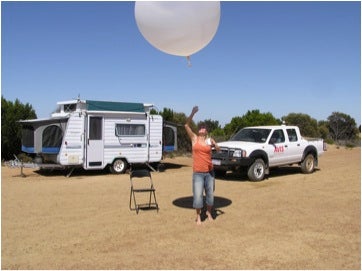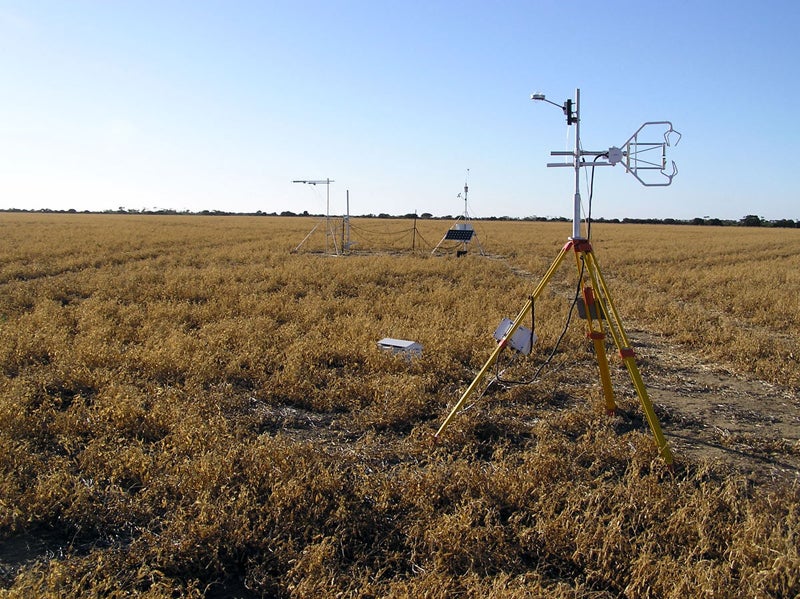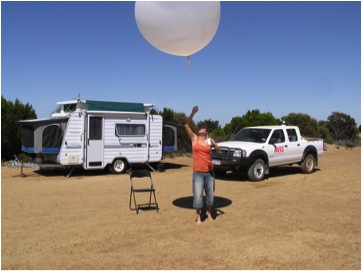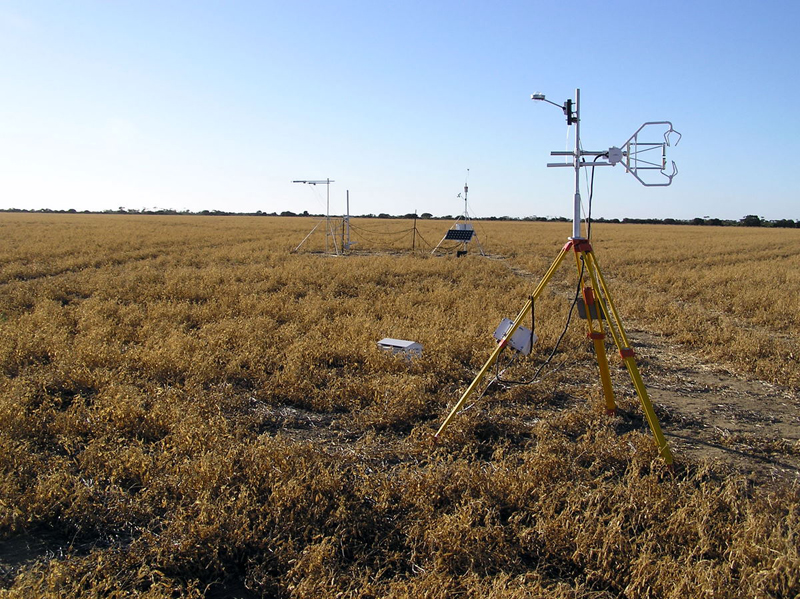 The researchers planned to use a variety of field observations collected from different platforms along with numerical modeling to address the five scientific questions listed earlier in the text. The BuFEx team conducted a field campaign to procure the required observations.
The researchers planned to use a variety of field observations collected from different platforms along with numerical modeling to address the five scientific questions listed earlier in the text. The BuFEx team conducted a field campaign to procure the required observations.
The field campaign consisted of a one year extended observation period and two three-week periods of intensive observations. Surface energy measurement instrumentation will be deployed on the two sides of the bunny fence throughout the extended observation period. During this phase, in addition to regular observations taken by the Australian Meteorological Bureau (AMB), they acquired temperature, humidity, pressure, soil temperature, soil moisture and precipitation measurements from a network of agricultural meteorology stations distributed through the study region.
The extended phase of the field campaign started in December of 2005 and ended in November of 2006. The intensive field campaigns, during which coordinated observations were made using the mobile GLASS systems and the research aircraft, were intended to be three-week periods, one during August-September of 2006 and another in December of 2005. During the summer month of December the agricultural areas are bare after harvest, while winter months of August-Spetember is the peak growing season for the agricultural crops. The intensive field campaigns are thus designed to sample the atmospheric thermodynamics and circulation patterns for extreme conditions of contrast between surface vegetation on the either surface of the bunny fence. However, note that even though the fractional vegetation cover on the either sides of the fence is relatively similar during the winter season,  surface energy budgets are still expected to be different, since agricultural crops and native vegetation have varied transpirational characteristics. The use of the NCAR GLASS systems is for the intensive phases of the field campaign.
surface energy budgets are still expected to be different, since agricultural crops and native vegetation have varied transpirational characteristics. The use of the NCAR GLASS systems is for the intensive phases of the field campaign.
The observations from a pair of mobile GLASS systems were used to simultaneously sample thermodynamic and wind profiles on the two sides of the bunny fence. The two potential sites for deployment of the mobile GLASS systems (and other platforms) were in the vicinity of the Lake King (33.01S, 119.176E) and Frank Hann National Park (33.2S, 120.2E) areas. The nearby Lake King airstrip allowed for convenient deployment of the aircraft in this area. They used the Small Environmental Research Aircraft (SERA) of Airborne Research Australia during the intensive phase of the field campaigns for spatial sampling of atmosphere and surface soil moisture.
Read more about the field observations of BuFEx.

